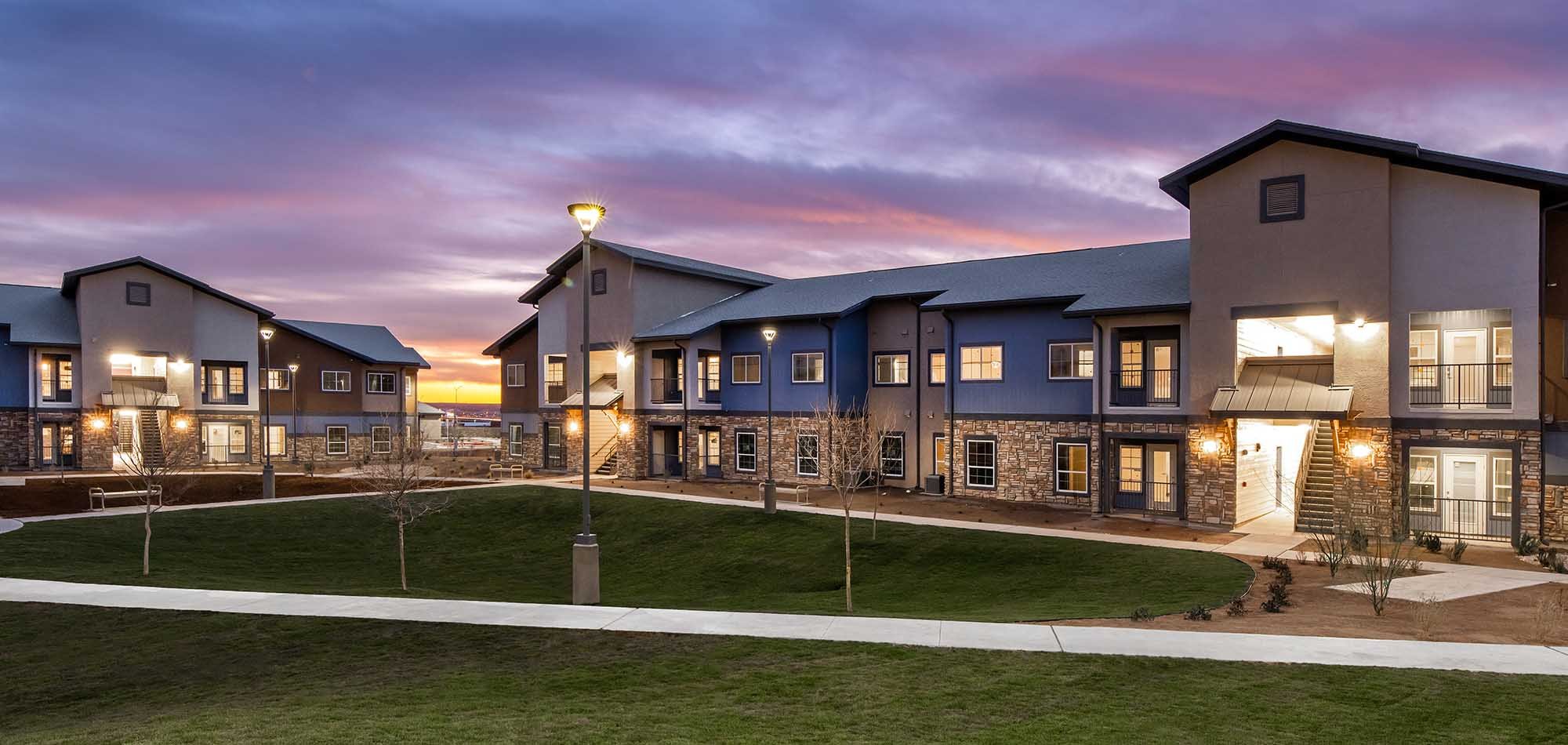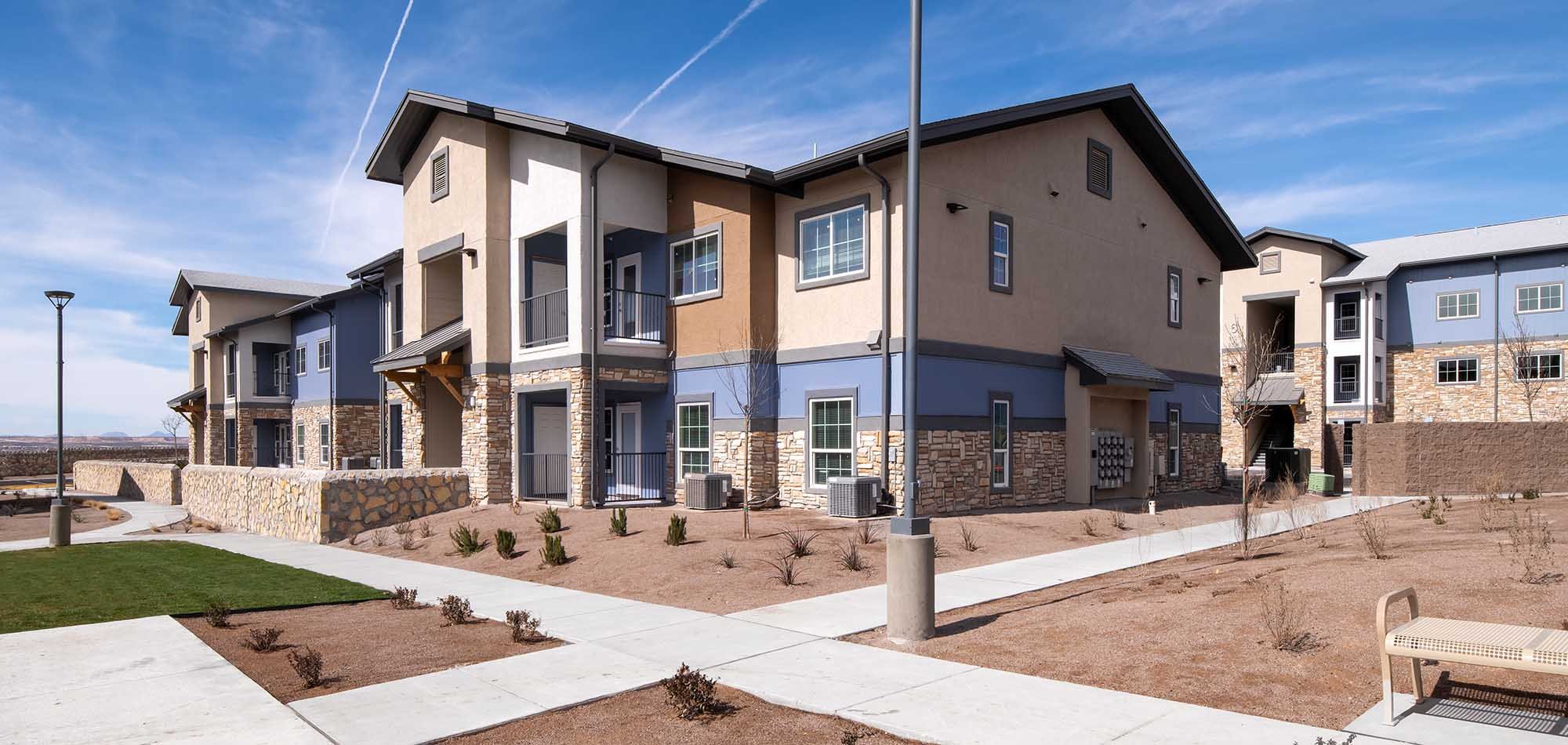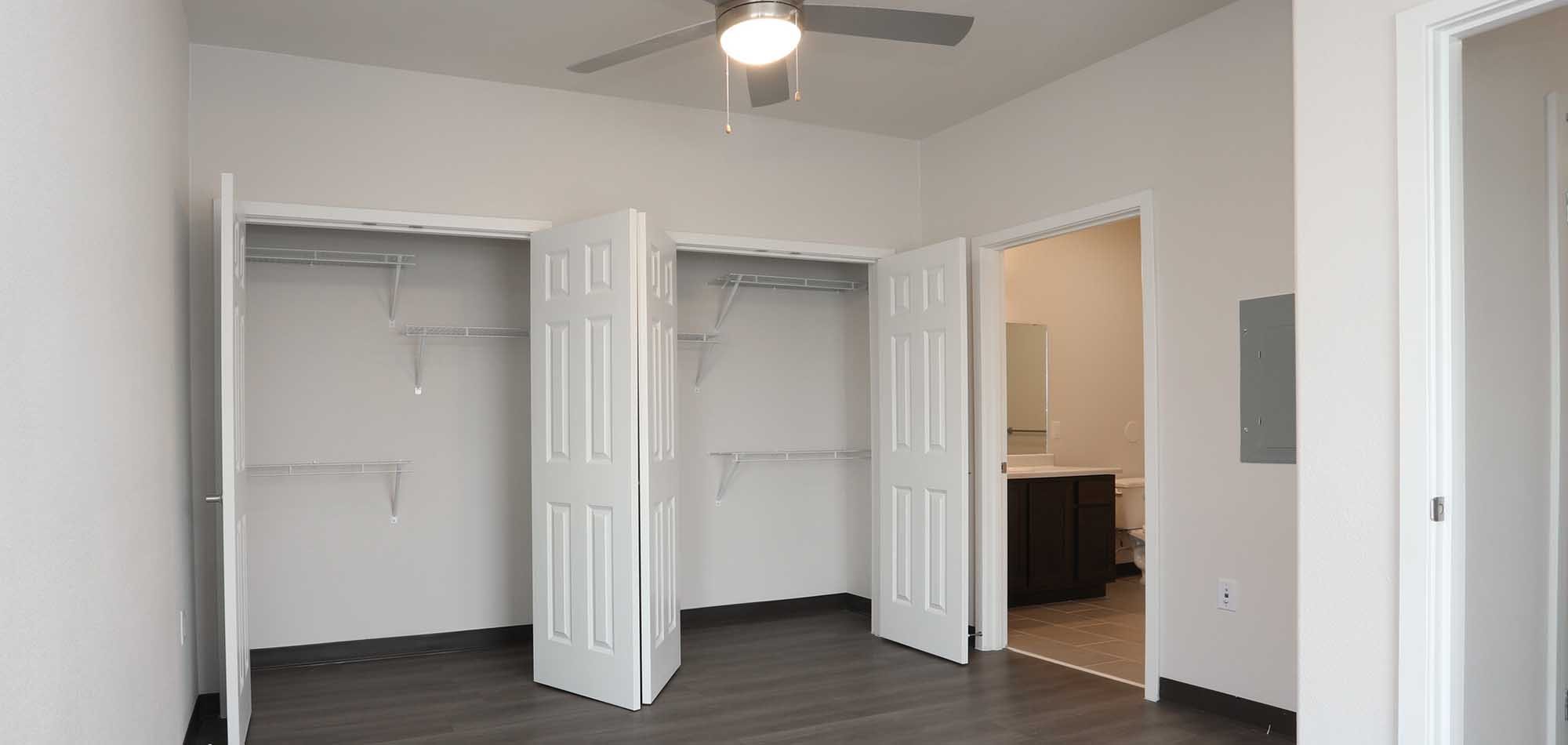My Thoughts on the Housing Authority’s Rezoning Case and Proposed Affordable Housing Development on South Mesa Hills
Published April 14, 2024
I’ll start off by being as clear as possible about my personal opinion about this issue – I support the proposal of the Housing Authority (now called HOME) to build apartments on South Mesa Hills. I’m happy to explain why. I live just up the street on Castile between the two parks – my wife and I walk past this property with our dogs nearly every day, we enjoy the use of Ponsford Park regularly, and South Mesa Hills is typically the way we enter and exit the neighborhood, so we pass by there all the time. Any decision made about this property is going to have a similar impact on me as it will on everyone else in the area. When I ran for office in 2022, I ran very clearly with a stance in support of affordable housing, and that is something I stand by in my own neighborhood just as I would in others. I know that there are a lot of stereotypes and outdated ideas about affordable housing; I ask that you keep an open mind as you read. I am similarly open to hearing well-reasoned arguments against the proposal from my constituents before making any decision. I will do my best to share as much information as possible with you, and also to share links to the resources for you to learn more if you would like to.
In this letter, I will address the following topics:
What the Housing Authority (HOME) is and isn’t
What HOME is proposing
Traffic concerns
Who would live there
EPISD and the impact on Putnam Elementary
Comparable developments in similar neighborhoods
Impact to property values
Safety concerns
The rezoning process and notification
The roles of the City Plan Commission and the City Council
I want to clarify two things before we get to the crux of the conversation: 1) the Housing Authority (HOME) is an entity that is run entirely separately from the City of El Paso. I think many people incorrectly believe that it is a department of the City or part of the City government, but it is not. It was created by state statute back in 1938 to provide low-income residents of the City of El Paso with access to low-cost housing. HOME is governed by an independent five-member Board of Commissioners. Although it is funded primarily by the federal government, HOME operates in many respects as an independent developer and private management company. You can learn more about HOME and the history of El Paso’s Housing Authority here. 2) The City is not proposing this rezoning or development, nor is the City Plan Commission. The Housing Authority submitted an application to rezone property that it already owns, and the City Plan Commission and ultimately the City Council are the bodies tasked with making a decision based on that application. City staff also simply received the application for rezoning and scheduled a hearing as they are supposed to; nobody has made any decisions yet. I have seen some people criticizing the City or the Plan Commission for proposing this, but they are only evaluating an application received from a property owner regarding their property.
While I didn’t know about HOME’s current request to rezone the property until the sign went up last week (I learned about it at the same time as almost everyone else in the neighborhood), I have had an idea that the Housing Authority was likely going to look to build there since they purchased the property from El Paso Water’s inventory back in 2019 (four years before I took office). HOME applied for a federally funded 9% Low Income Housing Tax Credit award for this property last year, and the City Council was presented that project along with others from both HOME and private developers in January 2024, though HOME may not ultimately be successful in that application with the Texas Department of Housing and Community Affairs in the most recent round of funding. In their current proposal, HOME instead plans to use a combination of Non-Competitive 4% Housing Tax Credit bonds (about 2/3 of the project cost) which the City has no real involvement in and HOME Investment Partnership Program funds (about 1/3 of the project cost) passed through from the U.S. Department of Housing and Urban Development and previously allocated by the City Council for affordable housing production across the City as guided by the El Paso Regional Housing Plan. This funding structure utilizing the 4% bonds for a majority of the project means that the apartments will be owned by a public-private partnership, with private investment and loans from traditional lenders (like major banks) who will have an ownership interest in keeping the development in good and safe condition, as well as strict oversight from the federal government to protect its investment.
HOME is proposing to construct a maximum of 112 units (but likely 104 units) on the 6.32-acre parcel. The Retreat at Mesa Hills, the large apartment complex next door, has 752 rental units on 36.51 total acres. Once constructed, the new affordable units would only represent fewer than 13% of the total apartment units in the immediate area along that block of South Mesa Hills. I have heard some concerns about traffic. Even very conservatively assuming 112 units and the El Paso average of 1.73 cars per household, this would only represent an increase of 180 cars in a neighborhood with more than 3000 residents and several thousand personal vehicles. As a wide, four-lane arterial street, South Mesa Hills would absolutely be able to handle that increase. The reality is that residents at existing HOME properties tend to drive far less than other residents, so the impact would likely be even smaller than that. After all, one of the positives of this location is that grocery stores, clothing stores, and public transit are all accessible within a half mile walk.
The proposed development would serve families earning 50-80% of the Area Median Income (AMI), or what the median El Paso household earns annually. These families have income and would pay rent. They are working people whose income is lower than the local median, but they are not in dire poverty. El Paso’s AMI for a four person household is $59,500, so 50-80% of that would reflect an earnings range of approximately $30-48k. Consider a single mother with two children and an elderly parent that they care for, working maybe as a teacher or a receptionist – that is a perfectly normal salary range for that person to be bringing in, and as the only earner in the household they would qualify for this type of housing. Would this be someone you wouldn’t want living in your neighborhood? Just because of how the economics of 50-80% AMI developments work out, a high percentage of residents end up fitting the profile of working single parents with multiple children. Here is an excerpt from the FAQ section about this type of development on the Texas Department of Housing and Community Affairs website about this type of housing and how it differs from traditional public housing (emphasis mine):
“In many instances there is a significant difference between tax credit and bond properties and public housing properties. Most developments in the TDHCA rental housing portfolio built using Housing Tax Credits and Private Activity Bonds require tenants to have income of at least 2 to 2 ½ times the rent. These housing developments further differ from public housing in that they are privately owned and privately managed and they primarily serve individuals and families with incomes between 30-80% of the area median family income. Most public housing developments serve individuals and families at 30% and below the area median family income. Tenants of tax credit or bond properties may include: administrative personnel, school teachers; police officers; firefighters; mechanics; retail employees; single parents who are balancing career and family while attending school; city employees; sales clerks; and retirees. The program's rent and income levels vary from county to county. The Housing Tax Credit and Private Activity Bond programs are not rental assistance programs like the Housing Choice Voucher or Section 8 Voucher programs. Tenants who qualify for Housing Choice Vouchers or Section 8 Tenant Vouchers may lease an apartment at a tax credit or bond property, however they must qualify under the same requirements as any other tenant. Federal law requires the property owners to accept tenants with rental assistance vouchers.”
One entity that stands to benefit greatly here is EPISD. Putnam Elementary School concerningly has a current enrollment of fewer than 300 students. In contrast, it had 700+ students in the mid-1990s and 500+ students as recently as the mid-2010s. Putnam’s enrollment has declined sharply, and the school has been part of EPISD’s previous discussions about potential closures. Other communities in District 8 have lost their neighborhood schools, and the fallout of those closures hasn’t been pretty. Families living at a new HOME apartment complex will provide students to boost enrollment at Putnam, increasing the school’s funding from the state and potentially safeguarding its future.
I know you’re probably picturing housing developments from horror stories like the infamous former Cabrini-Green Homes in mid-20th century Chicago, but the reality is that all of the newly constructed HOME properties are very nice, comparable or even favorable to other newly developed apartment complexes in El Paso. I would say that the closest comparable development is Medano Heights near Redd Road and I-10. Built in 2020, Medano Heights has 146 units on an 11.67-acre parcel. If you didn’t know differently, you would never guess it was public housing. It has a nice business center, a clubhouse, a large playground, a basketball court, and grill and picnic areas. Laundry facilities and maintenance are on site, and there is a property manager on site 24/7. Click through the pictures below and I think you’ll be impressed. It is by all accounts both a good place to live and a good neighbor to the surrounding community.












Property values in the neighborhood around Medano Heights haven’t declined since it opened four years ago; value growth has been consistent with the average in similar neighborhoods. I know you may not take my word for it, so I made a random selection of three properties on the streets immediately adjacent to Medano Heights and searched their value histories on the El Paso Central Appraisal District website. Below are screenshots of those. If you’d like more examples or want to double check this, I encourage you to look at properties in that area and search for them yourself using the EPCAD website’s Property Search function. The Medano Heights apartments are not far from our neighborhood; I would encourage you to go check the development out for yourself and see what you think of it.
I’ve also heard concerns about a potential increase in crime. Residents at HOME properties, and especially in those properties serving families earning 50-80% AMI, have significantly lower crime rates than the El Paso average. Why is this? There are two main reasons. For one, every person applying to live in a HOME property – adults, children, everyone – receives a full comprehensive criminal background check, and those with criminal histories are ineligible. That means that this will be the only property in our entire neighborhood where it is guaranteed that the people living there have no criminal background. The second reason, importantly, is that HOME residents who are convicted of a crime lose their housing, and their entire family has to move out with potentially no other options. This is a massive incentive for these HOME residents to lead lawful lives. These are working people who make an income and pay rent. Despite this lower crime rate, HOME hires off-duty law enforcement officers to patrol their properties at night, which will bring an additional law enforcement presence into our neighborhood. I will certainly not fear for my safety or the safety of my family in our neighborhood because of the presence of HOME.
As for the rezoning process, I want to emphasize that law, policy, and standard practice have all been followed to the letter, both by HOME and by the City Planning & Inspections Department. Most of the rezoning process is dictated to the City by state law, which the City in many cases actually goes above and beyond to include more citizens. For example, Chapter 211 of the state’s Local Government Code requires that a municipality notify residents within 200 feet of the subject property be notified of a proposed rezoning at least 10 days before the public hearing by the local zoning commission (which in El Paso’s case is the City Plan Commission). Our local Municipal Code requires that the City do better than this – the Planning & Inspections Department notifies property owners within 300 feet. Here is the rezoning application form that lists all of the requirements of the applicant, and here is the Planning and Inspections Department’s FAQ page about zoning cases. The applicant, in this case HOME, was required to post a notice of the rezoning case and the hearing before the City Plan Commission on the property, which they did in the form of the large green sign. They also had to notify any City-recognized neighborhood association that the property falls within, but our neighborhood doesn’t have a neighborhood association. I’ll share the following description of the entire rezoning process from the City’s FAQ linked above (emphasis mine):
What is the rezoning process?
After acceptance of a completed application, the Development Services Department reviews the request; obtains the review and comments from other City departments; schedules the case for the public hearing by the City Plan Commission (CPC); obtains a recommendation from the Development Coordinating Committee (DCC); prepares a staff report, and notifies property owners within 300 feet of the proposed rezoning and any appropriately recognized neighborhood associations. In addition, if the property proposed for rezoning is one or more acres in size, a sign must be placed on the property proposed for rezoning by the applicant at least 15 days before the CPC hearing. CPC holds a public hearing approximately six weeks following the submittal of the application, and votes to approve, approve with modifications, deny, or postpone the rezoning application. A report by the staff is presented, public input is received, and CPC deliberates its findings.
What happens if my application is approved?
When a recommendation to approve the application is made by CPC, an ordinance will be prepared and forwarded to City Council (CC) for finalization. The final hearing by [the City Council] will take place approximately four to five weeks after the CPC hearing. A report is presented by staff with the recommendations of DCC and CPC, public input is received, and CC deliberates its findings, and either approves, approves with modification, denies, or postpones the application. Upon finalization, the Development Services Department makes the necessary changes to the Official Zoning Map Series of the City.
As you can see, this case is still in the preliminary stage. It will go to the City Plan Commission on April 18, but the CPC’s decision is only a recommendation to the City Council, who will have a final decision on the rezoning case, as we do for dozens if not hundreds of rezoning cases every year. As it says above, a rezoning case typically isn’t considered by the City Council until a month or more after the CPC hearing. It is very rare for me to comment like this about a case that hasn’t gone before the CPC yet. I am allowed to comment publicly like this to share my personal opinion, but members of the City Council are strongly discouraged by our Code of Conduct from intervening directly in the matters before the CPC to avoid conflicts of interest or undue influence. Some people have asked me to go to the CPC hearing, but according to the Code, “Officials’ attendance at a City Board or Committee meeting is discouraged, based on the effect that their presence may have on the proceedings.” I want to be clear that my absence from the CPC hearing meeting doesn’t signal my disinterest or that I am ‘hiding’ from the issue — you won’t see any City Councilmembers there. We are supposed to let the CPC make their decision independent of any pressure from elected officials, and their recommendation will be presented to the City Council in due time.
That’s all that I have to share at the moment. Here is the full packet of backup information from the City Plan Commission meeting agenda for you to review. If I receive more questions that I think need to be addressed, I will update this to add. Please trust that there will be plenty more time and opportunity to engage with me about this before any decision is made by the City Council. I know not everyone will agree with me, but as always I have done my best to explain my thinking clearly and thoroughly and also share as much relevant information as possible.
Good wishes,
Chris Canales
District 8 Representative
El Paso City Council




